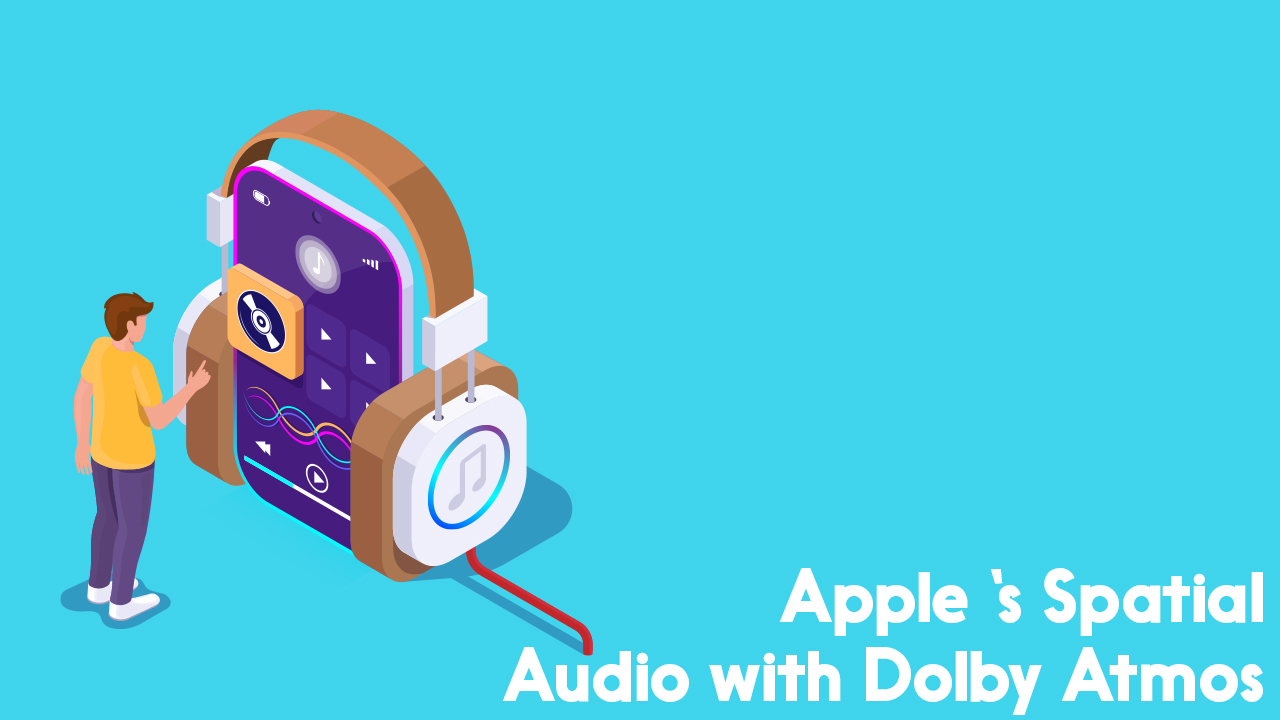How Can mix³ Spatial Audio Make Your Podcast Sound More Lifelike
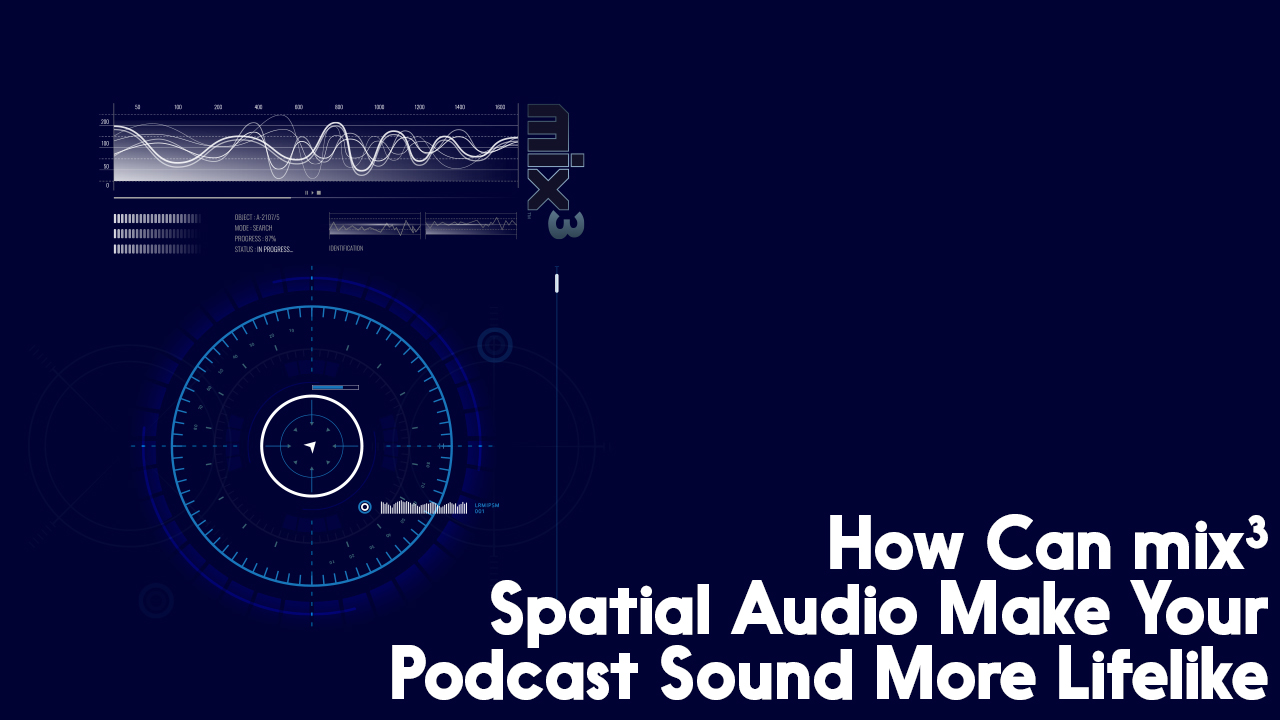
If I start to talk about the intimacy advantage of podcasts, you’re going to roll your eyes, I bet. Even if it’s true. Which it is. And spatial audio is a new tool on the block that can help us build this intimacy in very sound-gorgeous ways. This immersive audio experience can help humanize your podcast in ways you haven’t even thought of yet. Even if you have “just” an interview or talking heads podcast. I recently dipped my toes into a new cloud-based spatial audio from Immersion Networks called mix³ (pronounced MixCubed) that I’d like to share with you.
While trying out mix³, I learned how:
- lush our audio landscape can be
- subtle track position changes can add emotions and meaning to an audio experience
- spatial audio can make audio sounds more like real life
A Spatial Audio Overview
About this time last year I had my first podcasting conversation about spatial audio with the Author of Das Podcast-Buch (The Podcast Book in English), Doris Hammerschmidt on Geopats Podcasting She described a podcast that her partner was working on using Sennheiser’s 3D audio program, Ambeo. Yes, the same Sennheiser who makes these amazing microphones. Doris described how using spatial audio added a layer of authenticity to the story. I didn’t quite know what she meant then but after experimenting with mix³ for this post, I’m beginning to.
What’s Spatial Audio?
Recently you may have heard this term because of Apple’s Spatial Audio rollout. Think of this as sound with the location options fully available. When we listen to audio now, the norm is more of a single-channel audio experience where the sound comes from one location towards us in one path. However, spatial audio, which you can see an example of via mix³ ‘s platform below, has sound (those pink, yellow, and green circles on the screen) are coming from many different locations around the listener (the green headphones in the middle of the screen).
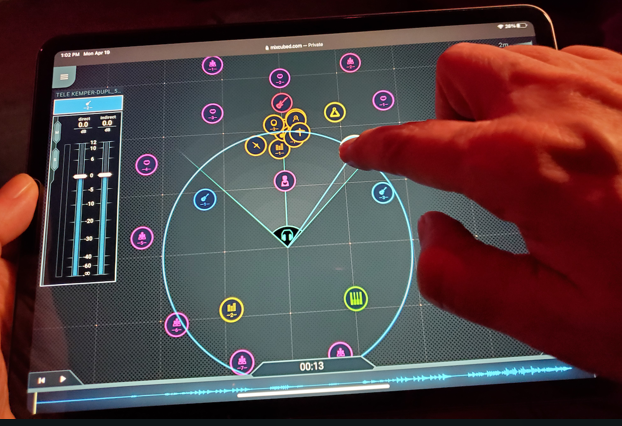
A Few Technical Notes to Touch On
As far as I can tell, especially for simpler spatial audio usage in podcasts, the terms 3D audio, binaural audio, 360-degree audio, and immersive audio have either the same meaning as spatial audio, or they’re similar but not exactly the same audio experience. It gets technical fast, and you’re not here for a lesson in sound per se. However, if that’s your jam and you’re curious about the difference, Gregory of The House of Kush goes into the dimensions of sound in this video. In this post, I’m going to focus on what mix³ allows us to do with their platform.
How Does Spatial Audio Benefit Podcast Listeners?
The most important discussion of all when considering technology for your podcast audio needs is: how could your listeners benefit from you using this tool?
How Can Spatial Audio Be Used in a Podcast?
King Kur of the Black History Buff podcast shared a number of ways that he’s considering incorporating spatial audio into his own projects in the future.
- Move the speakers’ position closer to the listeners’ ears, to create a dramatic effect, increase the intimacy of the moment, or tell a story’s secret. They do this at (4:18) in this adorable Virtual Barber Shop audio cartoon, from the LovelyVirus folks.
- Pan a speaking track off to the left or right and fade it away, to create a drifting out of the conversation effect.
- Move a sound behind the listener to give them a sense of the person/character’s movements by having the sound move as they move. This is done a few different ways in this Immersion Networks mix³ clip.
How Do Podcast Listeners Feel About Spatial Audio?
Dustin from The Sandman Stories gives us a peek into his own experience with the UnCanny Japan podcast.
“Using spatial audio helped put me there with the person. Like in the Monkeys and Monkey Lore! episode. It felt like I was on the beach with Theresa, listening to her tell me a story like a best friend. It let me melt into the podcast and float away.”
That’s powerful! This stronger emotional pull is undoubtedly why more and more virtual reality (VR) games, meditation apps and videos, and podcasts are using spatial audio.
How Easy Is It for Podcasters to Learn How to Use mix³?
You Do Not Need Special Equipment for mix³
You don’t need to use any special equipment to use the mix³ spatial audio platform. I know, I know, I’ve seen the Sennheiser Ambeo Smart Headset also. They have 2 mics built in to record binaural audio. It’s amazing. But that’s not what mix³ requires. In fact, here are the requirements from the mix³ website.
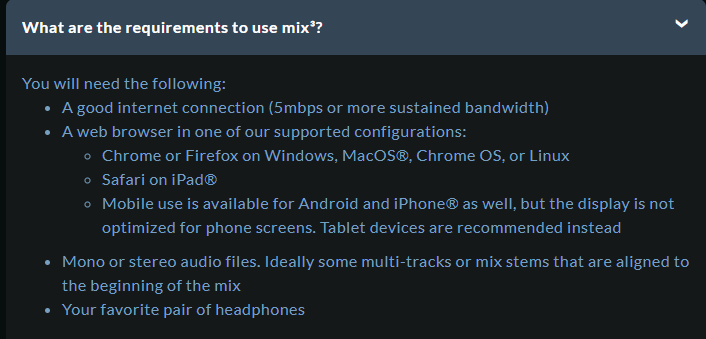
How Steep Is the mix³ Learning Curve?
I’ve spent about 2 hours experimenting with mix³ over the past few days. So I’m far from an expert but I feel like by doing the tips below, I was able to learn a lot within this short time.
- watch all the demos on this page (they’re short): https://mixcubed.com/demos
- made a video as I experimented. If you’re someone who edits while streaming on Streamyard or Twitch, this method would work for you.
- listened to the above spatial audio samples and tried to replicate some of the vocal effects
Overall, I would say that for podcasters who are used to editing their own audio, the learning curve to do basic tasks in mix³ is very low. You import audio, move the position of the audio and save it as a keyframe (the dots on the position, gain, and width timelines at the bottom of the screen). Then render the file. That’s the basic workflow. You can definitely add complexity from there.
Tips for Making the Most of Your mix³ Experience
I first tried using a single speaking track to try out mix³. If you’re shaking your head, you’re right to. What I learned is that this type of audio is most useful when you have constant sounds. Speech alone has too many silent moments so hearing the audio movement, per se, was harder to hear because I could hear the new positional sound but didn’t hear the voice moving there.
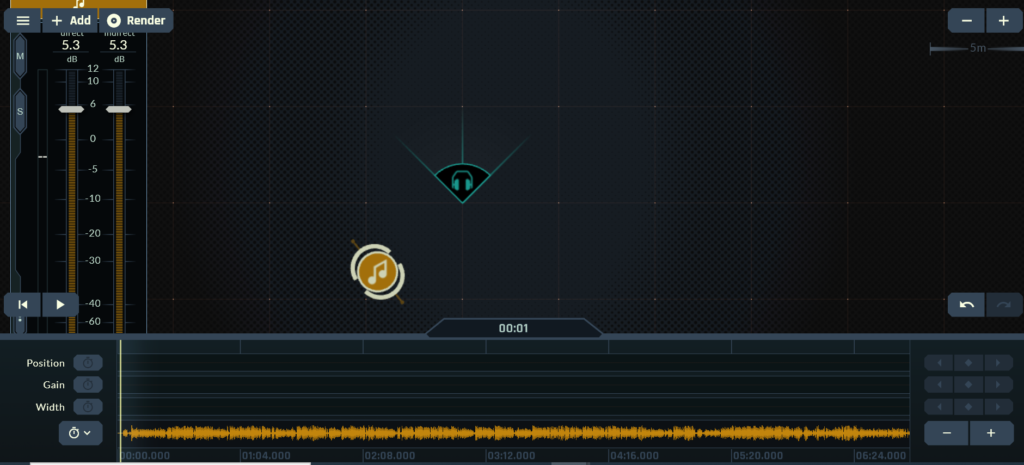
So when I added a coffee shop second track to the speaking track (below) then I could hear the audio movement. The coffee shop sound is on the left in the screenshot below, the listener is the green headphones icon and the speaking track is just below the listener icon.
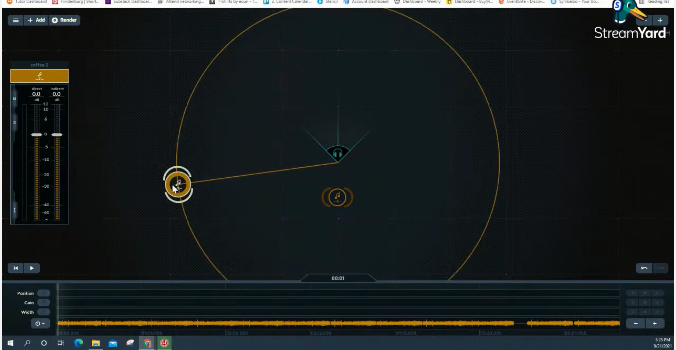
This brings up a good point. I first entered this experimentation trying to find a clever way to use spatial audio to make certain vocal effects. What is a much more effective use of mix³ ‘s platform is to know what atmosphere you want to create with the entire audio file, then create it technically. Lead with the sound need, not the shiny, new tech abilities.
What Are the Disadvantages of mix³ ?
As much fun as this tool can be fun to try out, there are some drawbacks that you may want to know as well.
- even with the paid plan, there is a 10 minute audio limit
- it will add time to your workflow: this would be a final editing step, after all content and sound clean up would be complete.
- it can only be heard when the listener is wearing headphones. This is a feature of spatial audio in general. Right now, hosts often remind listeners to use headphones on these episodes.
- it increases your production costs (after the 30 day trial period)
mix³ Pricing
mix³ has three price tiers, which you can see when you log into your free trial account: Free, Trial, and Introductory plans.
- Free: Users can view and listen to projects only. To create, edit, or render projects you need to use one of the other plans.
- Trial: 30 days: Users can view, listen to, create and edit up to 15 projects with a maximum of 32 tracks and a maximum track length of 10 minutes. High-resolution renders, downloads and advanced perceptual loudness normalization is also included in this trial plan.
- Introductory: $9.99/month plus applicable taxes. Users can view, listen to, create and edit up to 200 projects with a maximum of 32 tracks and a maximum track length of 10 minutes. High-resolution renders and downloads and advanced perceptual loudness normalization is also included in this trial plan.
Essentially, the Trial Plan is quite generous and the Introductory Plan is reasonably priced and convenient, but both have a 10-minute audio limit.
10 Minute Time Limit
If this time limit is a deal-breaker for you, you’ll be pleased to know that on their FAQ page they offer a solution:
“Contact us at [email protected] and we will be happy to work with you to meet your needs.”
Conclusion
I fully admit that pointing out the disadvantages of mix³ was hard to do. Thanks to King Kur for helping me think of some of those. The reason it was so hard is that even if the audio itself doesn’t make it into your podcast episodes, the sheer act of thinking about the location of the sounds in your episodes can truly transform how you envision them. I know that sounds counterproductive but I honestly feel like my relationship with sound is different after experimenting with mix³ and I hope yours is too.
Final tip: If you want to learn more you can watch this 2+ hour Zoom call that Immersion Networks did demonstrating MixCubed in July 2021, when it became first available. The first demo starts at about (40:00) and there are many more after that.

Let Alitu Take Care of Your Podcast Editing
Alitu is a tool that takes your recording, polishes it up, adds your music, and publishes the episode, all automatically.
Learn more about Alitu
Start Your Podcast
If you’re reading this article because you’re thinking of starting a podcast, we’ve got more help for you! Making a podcast is a good way to share your voice and story with people around the world. We can help. Check out our guide to How to Start A Podcast for the basics. For a deeper dive into podcasting equipment, planning, editing, and promotion, check out Podcraft Academy. We’d love to help you on your journey.
